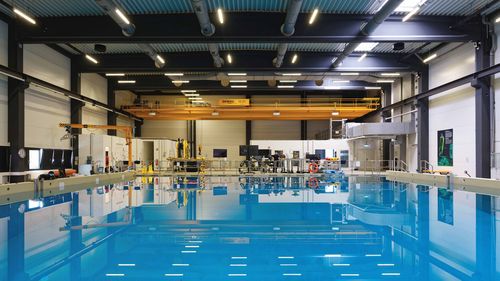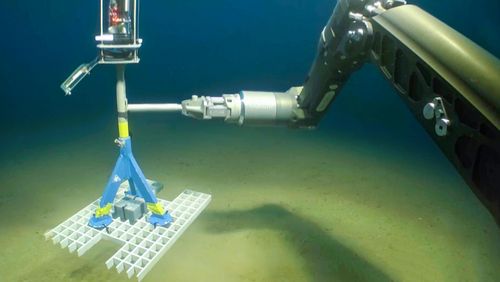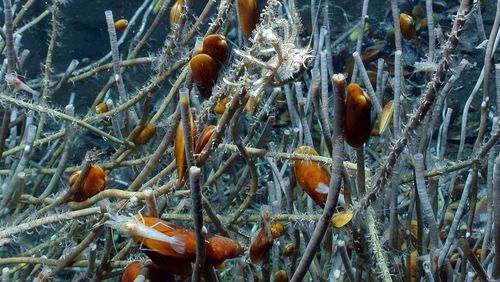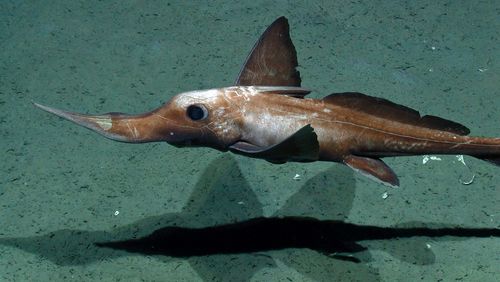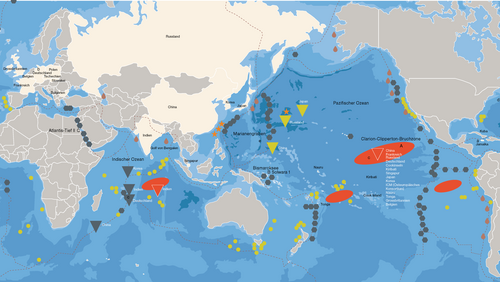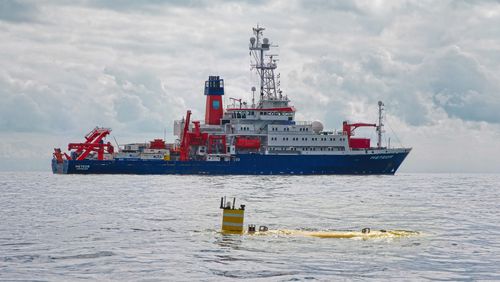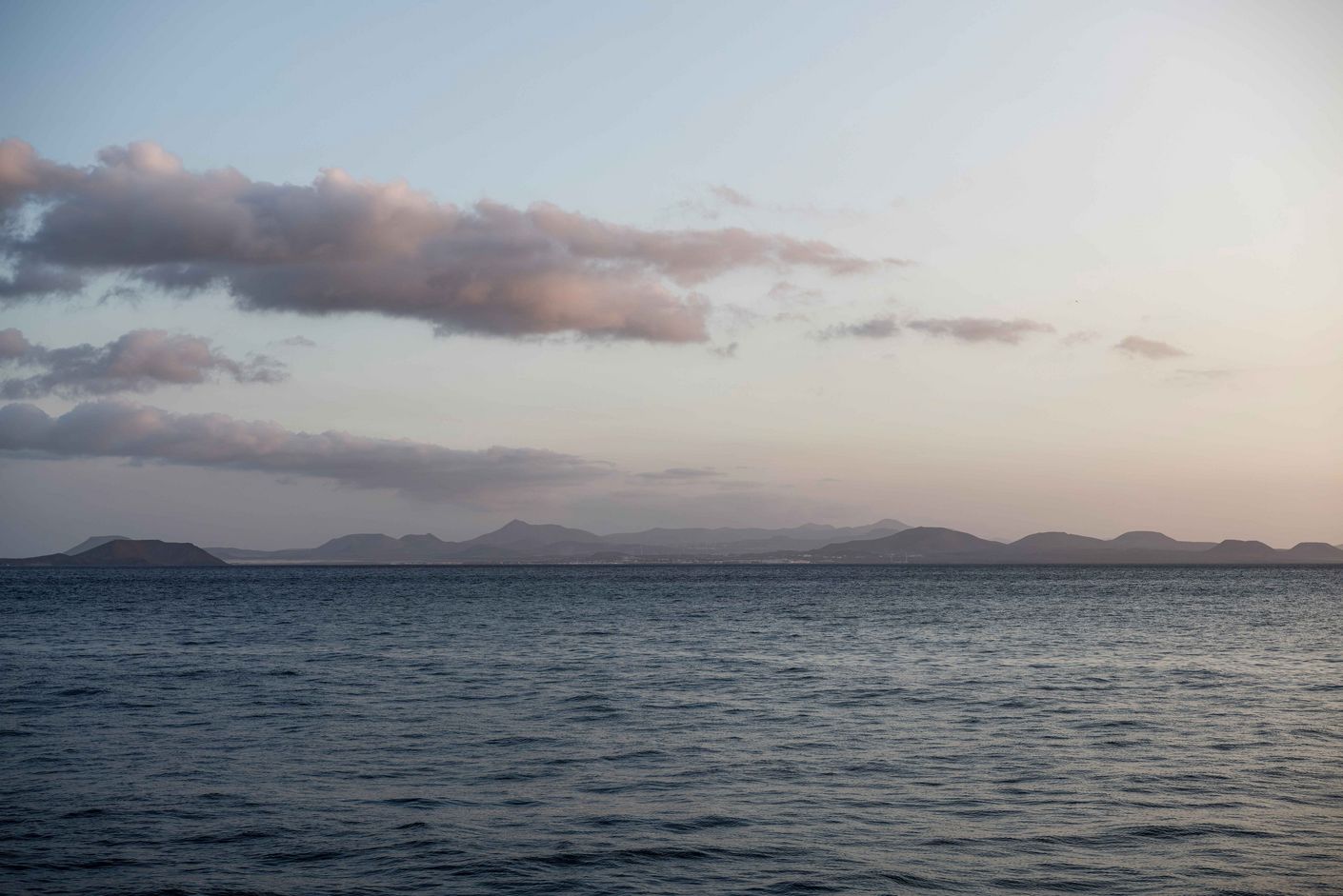
Is global warming pushing the seas past tipping point?
Oceans absorb massive amounts of heat and carbon dioxide from the atmosphere, making them the planet’s most important climate buffer. But can they keep up the good work forever—or are there limits to the seas’ capacities? In other words, will they reach tipping point? Marine geologist Michael Schulz and palaeoclimatologist Gerald Haug, two experts whose projects are financed by the Werner Siemens Foundation, share their assessment of the situation.
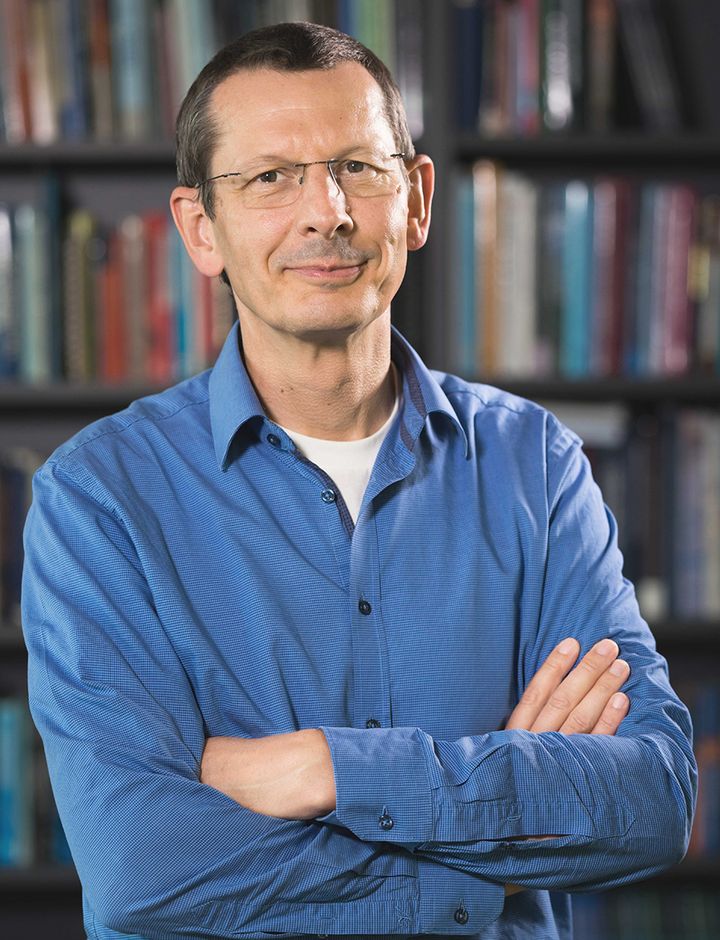

Last year saw one record-high temperature after the other: July 2023 was the hottest month since measurements began, with 3 July marking the hottest day. Which marine ecosystems are most vulnerable to the extreme heat?
Michael Schulz: The physical properties of the world ocean coupled with its sheer volume enable it to store significantly more heat than the atmosphere. Seen globally, this means that extreme weather is currently having only a minor effect on the seas. But, as small as the overall effect is at present, we should by no means underestimate it. An increase of just roughly one degree Celsius in the water temperature can already have a measurable impact on the highly complex marine food chains. And seen on the local scale, the migration of one fish species can have dramatic consequences for the human populations who depend on it for their livelihood.
In 2023, even traditionally cold regions like the Arctic Ocean, Antarctica and the Atlantic Ocean warmed surprisingly quickly to record highs.
Gerold Haug: Global warming is having a major impact on the Arctic. Current calculations predict that by 2050 there will be no more sea ice in summer—the Arctic Sea will freeze over only during the winter months. The melting ice in polar regions will lead to a marked rise in sea levels, and this will become a long-term problem for the human species. And even if we managed to restrict our CO2 emissions to zero starting tomorrow—which we’re far from doing—sea levels would continue to rise for the next several hundred to a thousand years. We have no way of gauging what this will mean for future generations. It also needs to be noted that a third of the world’s population lives near a coast.
Is it true that global warming has had only a minor impact on life in the oceans?
Schulz: In coastal regions, the past decades have brought the kind of massive storms we used to see just once in a century. And we’ve observed a change in marine seasons as well as more frequent occurrences of oxygen depletion in lower water layers.
Haug: We’re also increasingly observing a trend towards heatwaves in the ocean waters; for the past few years, these patterns have been growing more intense and lasting longer. Right now, most of these phenomena occur at the water’s surface, which has serious repercussions for fish populations. At greater depths, the warming is still progressing very slowly.
At least some good news for the deep sea?
Schulz: I’m afraid not. A warmer surface layer has an indirect effect on numerous marine organisms. It’s believed that the amount of organic matter, nutrients, microorganisms and CO2 transported from the surface to the depths will decrease as will the exchange between warmer and cooler water layers—which is problematic, as this exchange plays an essential role in the emergence and decay of ocean life. Model calculations for the year 2100 forecast that the naturally low biomass in the deep sea will, expressed in percentages, see the greatest drop.

Innovation Center for Deep-Sea Environmental Monitoring
Scientists at the MARUM Innovation Center in Bremen are developing novel technical solutions to identify and monitor ecologically critical deep-sea regions. Last year, co-project leader Ralf Bachmayer and software engineer Pablo Gutiérrez joined the crew on the research vessel Eugen Seibold—also funded by WSS—at the ship’s base station near Lanzarote, where they conducted tests on the remotely operated underwater vehicle MiniROV. Equipped with an optical sensor capable of identifying deep-sea matter and organisms, the MiniROV transmitted images from the Atlantic directly back to the ship. Ralf Bachmayer is pleased with the results: “Our tests with the MiniROV conducted from the Eugen Seibold as well as follow-up discussions on the value of these developments and missions confirm that we’re on the right track with our sustainable observation and monitoring systems. And also that this work is more relevant than ever for activities like sequestering carbon dioxide in the seabed.” The MiniROV test was the first joint undertaking for the two marine projects financed by the Werner Siemens Foundation. In future, the research groups plan to continue their collaboration when their interests intersect.
Funding from the Werner Siemens
Foundation 4.975 million euros
Project duration
2018 to 2028
Project leaders
Prof. Dr Michael Schulz,
director of MARUM – Center for Marine Environmental Sciences at the University of Bremen
Prof. Dr Ralf Bachmayer,
MARUM – Center for Marine Environmental Sciences at the University of Bremen
Are there other ways that global warming is impacting the deep sea?
Schulz: Take the greenhouse gas methane. It’s made up of organic matter such as the remains of plankton that lived in the ocean long ago and that have sunk to the seabed. In addition, enormous quantities of methane are also found in the oceans’ continental slopes in the form of methane clathrate—whitish, ice-like solids created when methane and water bond. When warmer temperatures cause them to melt and release methane, there will also be impacts on the deep sea. But, like so much in the marine world, we don’t know exactly what will happen.
What are some possible scenarios?
Schulz: Well, the methane could enter the atmosphere and further exacerbate global warming. Or it could remain in the water and trigger microbial reactions. This is because methane is also a nutrient for microorganisms, including certain kinds of bacteria and archaea that break down methane. Through chemical processes, then, these deep-sea creatures convert gases into organic matter, providing food for other creatures in the deep sea. It’s important to understand that there are fundamental differences between how deep-sea organisms and land creatures function. In particular, marine life is partially dependent on chemical processes, and not sunlight.
What marine life is most vulnerable to the rising temperatures right now?
Haug: Any organism that can’t just swim to colder regions. Coral reefs and mangrove forests are examples, but so are the people who live near a coast. For them, rising sea levels will have devastating consequences.
In the past eighteen years, the oceans have absorbed twice as much heat as previously, and they’re also the world’s largest carbon sink. These massive buffer capacities have been able to cushion some of the warming caused by us humans. What’s the limit? Can the oceans’ buffer system manage global warming of more than two degrees Celsius, as forecast for 2100?
Haug: The only way to avoid more than two degrees Celsius is by complying with the Paris Climate Accords, which is currently not the case. Right now, we’re actually steering towards even higher numbers, globally plus
2.7 degrees Celsius on average up to 3.4 degrees Celsius in the worst case, which will drastically compound the climate impacts.
Will the oceans reach tipping point?
Schulz: No. At present, we have no indications that the world ocean as a whole will reach a tipping point. It will undergo radical change, but not in the sense of reaching a critical threshold after which everything will be irreversibly changed.
Haug: I agree. The oceans are changing, climate history clearly shows this. Shallow seas can change very quickly due to the increase in energy uptake, and that will lead to more extreme weather like heavy rains and tropical storms. We’ll also notice this on land. But most of the world ocean is located below the so-called thermocline, the water layer that prevents cold deepwater rich in CO2 and nutrients from rising to the surface. Below the thermocline, the impacts of global warming are still minor.
So the oceans won’t reach tipping point? We’re constantly hearing about these dangerous thresholds.
Schulz: One frequently mentioned tipping point exists in a major ocean subsystem—the “large Atlantic meridional overturning circulation”. If the water in the Northern Atlantic doesn’t cool down enough, it will become less dense. Eventually, this will progress to a point where water density isn’t high enough to ensure the critical overturning process, and vertical circulation can no longer take place. Although some researchers believe this will happen in a few years, this prediction is at variance with all long-term measurements and realistic models.
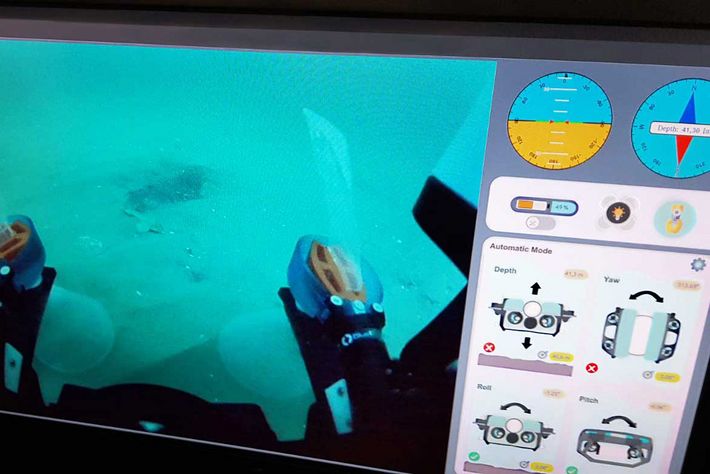
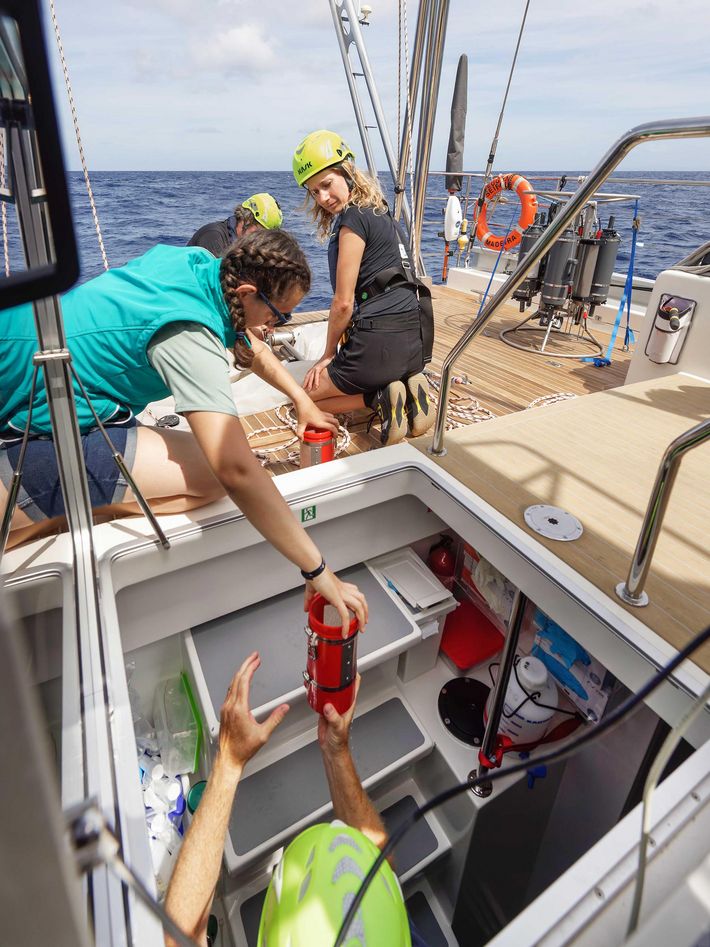
Can you explain what’s wrong with the idea that this will happen?
Schulz: For one, changes in the ocean take place on a time scale of hundreds of thousands of years so it’s completely irrelevant for our society. In addition, the idea of irreversible change is incorrect. When we look at the oceans from a geological perspective, we can make the long-term prediction that Earth will outlive humans and that our blue planet will host some sort of life for as long as it endures. As such, the better question is whether the changes are happening so quickly that we humans will be unable to adapt.
What’s the most urgent step we should be taking to not—literally—poison our own well?
Haug: We need to enact immediate reforms in our energy systems and drastically reduce the amount of fossil fuel we burn, especially coal. But we’re not doing any of that.
Schulz: In the West, we’re attempting to use renewable energies to cover our energy needs. But it’s delusional to think this will be enough. It won’t work if we don’t lower our current energy demand by two-thirds. We need to adopt a completely different lifestyle.
What’s your position on technological approaches to slowing climate change?
Schulz: Ralf Bachmayer at our Innovation Center for Deep-Sea Environmental Monitoring is currently exploring whether it’s possible to sequester large amounts of CO2 in deep-sea basalt rock layers. Liquefied carbon dioxide reacts relatively quickly with the basalts, generating carbonate rock. If you ask me whether I think this is necessary, my answer is clear: there’s not a single scenario that doesn’t involve removing CO2 from the atmosphere. The oceans will almost certainly play a major role, as they have great potential as a carbon sink.
Why aren’t we doing this already?
Schulz: Sequestering CO2 in the ocean crust consumes an incredible amount of energy. Although it’s true that the high temperatures in marine volcanic rock can convert liquid CO2 into carbonate rock within just a few years, there’s a major drawback: the operation would be taking place in the middle of the ocean. Travelling there in huge tankers, drilling and injecting carbon dioxide is no simple task. Right now, various agencies are calculating the carbon footprint of this procedure. In addition, we have to see whether it wouldn’t be wiser to use the natural basalt deposits in Iceland, Africa and India for carbon sequestration.
Are other technologies being considered?
Haug: We should be thinking about creating a circular economy along the lines of carbon capture and utilisation, a procedure that separates CO2 where it’s emitted and then uses it in catalysis reactions to produce energy carriers like methanol. When we think in terms of larger energy cycles, I believe this could help us achieve a five to ten percent reduction in carbon dioxide over the next thirty years. But here, too, many things that are possible in the lab can’t yet be done on a large enough scale.
Schulz: Another problem is that technological solutions themselves will always consume energy and we can’t increase power production from renewable sources fast enough.
Haug: That’s why policymakers are called on to diversify energy production as soon as possible, and—with industrial stakeholders—initiate dialogue with regions having great solar- and wind-power potential. North Africa, the Arab world, Australia and Patagonia are examples. Enough solar energy can be generated in the tropics and subtropics. At any rate, Europe will still have to import seventy percent of its energy in the future.
How hopeful are you?
Schulz: What makes me hopeful are the very serious studies showing that a less carbon-intense lifestyle doesn’t mean reverting back to the Stone Age, that we would still have enough to feed the world’s growing population and guarantee mobility, housing and energy consumption at a reasonable level. There are plenty of resources on earth. It’s a question of how we distribute them.
Haug: We also have the necessary technology at our fingertips. For me, scientists still represent a great hope. Because, in truth, we can do it. We’re motivated and willing to keep at it and work together on a multinational level. Right now, the biggest problem is the lack of political will to enter into binding international agreements and to introduce market-based steering mechanisms such as carbon pricing.

Research vessel Eugen Seibold
After two years spent sampling the Atlantic, the crew aboard the Eugen Seibold has now sailed through the Panama Canal to the Pacific Ocean. The passage was “a political tightrope act for a ship fitted with this kind of high-tech monitoring equipment,” project leader Gerald Haug says. “It took having the German ambassador on board to allay the local government’s fears of espionage.” Later, German foreign minister Annalena Baerbock also paid a visit to the Seibold at the crew’s new base station in Panama City. From there, the researchers are studying the weather phenomenon El Niño in transects between Panama and the Galapagos Islands. “El Niño is a major ocean-atmosphere climate event that we want to quantify in biological, physical and chemical terms,” Haug says, adding that another highlight of the past year was taking biochemical samples of the large coral archipelagos in the Central Pacific, a mission privately financed by a generous oceanlover. For the first time, the researchers measured nitrogen isotopes in the corals as well as organic material, nutrients and biomarkers; their findings have now tripled the holdings of a major corals archive.The Seibold’s crew will also contribute additional measurements, enabling quantitative comparisons to be made between current and future oceanic and atmospheric changes and those of the past decades and centuries.
Funding from the Werner Siemens Foundation
3.5 million euros (2015–2019 construction, technical installations)
3 million euros (2020–2030 operating costs)
Project duration
2015 to 2030
Project leaders
Prof. Dr Gerald Haug,
director of the Department of Climate Geochemistry,
Max Planck Institute for Chemistry, Mainz and professor at ETH Zurich
Dr Ralf Schiebel,
group leader of Micropaleontology,
Max Planck Institute for Chemistry, Mainz
